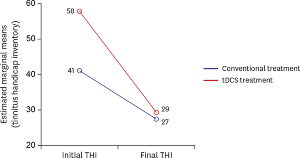- Feb 15, 2016
- 104
- Tinnitus Since
- Blessed to not have...often
- Cause of Tinnitus
- NA
@Paulmanlike , I do think there is a possibility that refining the placement COULD improve the results.
Regarding it being a"standard tx for tinnitus," I think the limited results + the price of the required machinery is what prevents it from being more common.
...and maybe some folks are hesitant to have their neurons instantaneously reset.
I think it is neat that this has worked as well as it has. I am pleasantly surprised that there haven't been significant unwanted effects. I suspect that we are far enough into it that there will not be any, but as the this technology gets more powerful, I too would proceed with caution.
Regarding it being a"standard tx for tinnitus," I think the limited results + the price of the required machinery is what prevents it from being more common.
...and maybe some folks are hesitant to have their neurons instantaneously reset.
I think it is neat that this has worked as well as it has. I am pleasantly surprised that there haven't been significant unwanted effects. I suspect that we are far enough into it that there will not be any, but as the this technology gets more powerful, I too would proceed with caution.

 Member
Member
 But I wanted to read some experiences and opinions around here... English is not my native language and for me it's a little bit difficult to read science articles and trials, but I'm trying.
But I wanted to read some experiences and opinions around here... English is not my native language and for me it's a little bit difficult to read science articles and trials, but I'm trying.